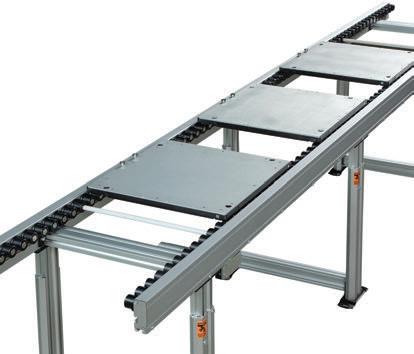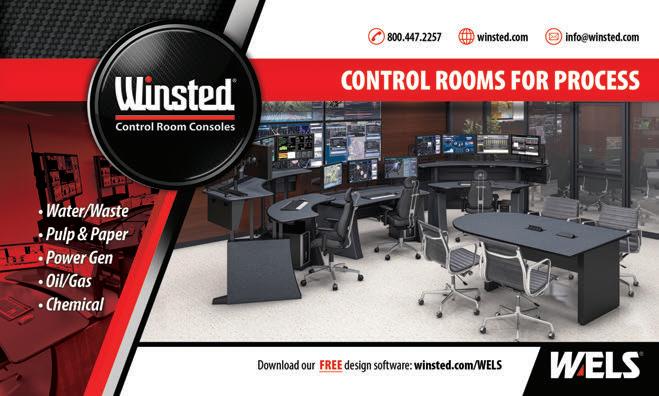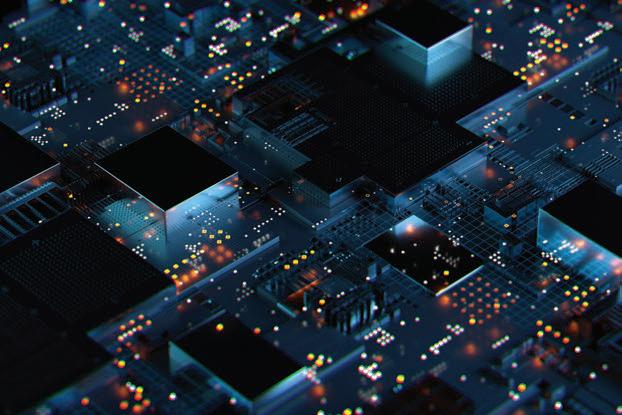
3 minute read
Key Aspects of Motion Control Integration
When reviewing motion control systems for ease of integration, important questions to be asked include connectivity with other mechanical components and safety systems, as well as the standard questions surrounding torque, horsepower, and inertial load.
As much as the focus on automation technologies has shifted to machine data and the best ways to analyze and use those data, motion control remains critical to successful production. But just as the management of machine data has changed with the introduction of new technologies, so too has motion control. Following are five key areas for OEMs to consider as they select motion control technologies for specific applications.
SEPARATE OR INTEGRATED?
As programmable logic controllers (PLCs) and programmable automation controllers (PACs) integrate more control capabilities, including motion, OEMs need to determine, based on the application, if a separate motion control system is needed. To make this determination, find out of the PLC or PAC can control the motor they’re looking to use in the application. Also find out if the PLC or PAC can track absolute coordinates and resume operation immediately after shutdown.
INTEGRATION WITH MECHANICAL COMPONENTS
Proper product selection and system compatibility can ensure smooth system implementation. For example, gearheads need to be
compatible with motors. The right gear ratio needs to be chosen. Motors need to be wired with a unipolar, bipolar, full-step, or microstep driver. Drivers and feedback sensors need the right protocols to communicate with the motion controller or PLC.
The more compatibility you have across all components in the system, the less of a headache you'll have when trying to integrate these together. For example, if a driver does not oer the same communication protocol as the PLC, you will need to purchase an additional gateway or network converter in order to convert the protocol. If a manufacturer can provide most of these components, there’s a good chance that they can ensure compatibility and guarantee specifications.
COMBINING MOTION CONTROL AND SAFETY
Some safety functions can be combined with a motion control system, but some have to be kept separate. For example, some safety certifications, such as STO (safe torque o), requires all components to be safely rated. A motor manufacturer may not be able to provide every component in a safety system, such as safety switches or relays.
KEY QUESTIONS
In the past, motors and drivers were selected first, then controllers were selected. Now, with the emergence of industrial networking, it is advantageous to start with PLC, PAC, or human-machine interface selection based on the communication protocol desired, then add everything else. When defining motion control system requirements, it's useful to let the manufacturer know what other components you're planning to use in the system, so they can oer the easiest integration options first. As far as motor sizing and selection goes, be sure to provide the most accurate parameters to aid sizing accuracy. And be sure to discuss your application requirements as well. Sometimes, standard built-in driver functions can eliminate some R&D eorts.
When it comes to proper motor sizing, these are some of the questions you should ask: • How much torque or horsepower do you need?
ERT ®
• What do you need the motor to do?
NEW BELTLESS CONVEYOR

Dorner’s new ERT250 utilizes Edge Roller Technology to provide low back pressure accumulation, non-contact zoning, and conventional transport, all without a belt! Patent Pending Linear Gearbox
As PLCs and PACs integrate more control capabilities, including motion, OEMs need to determine, based on application, if a separate motion control system is needed.
• What is the inertial load? • What is the required revolutions per minute? • What is the motion profile including acceleration and deceleration rates? • What's the required duty cycle? • What features or functions do you need? • What is the power supply? • How much space do you have? • What is your budget?
If some of the information is unknown, then more details may be necessary for motor sizing decisions. For a ball screw application, information such as ball screw lead, screw eciency, screw dimensions, and friction coecient, is needed. It all depends on the components involved and the design of the machine.
Always remember that you can never ask too many questions. Helpful information such as life estimation of products can also be provided by manufacturers. However, it's always better to perform a life test with the actual load, cycle rate, and environment.







